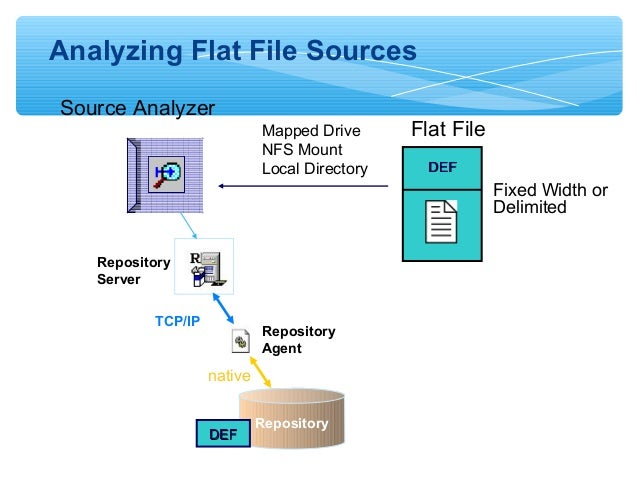Vsam Files In Informatica Etl

Vsam Files In Informatica Etl. Tapestry Patterns Download. The test result extracted from the output files and the database are verified and recorded. Online Testing.
Normalizer transformation: Normalizer transformation is used with COBOL sources, which are often stored in a denormalized format. The OCCURS statement in a COBOL file nests multiple records of information in a single record. We can use Normalizer transformation, to break out repeated data within a record into separate records. For each new record it creates, the Normalizer transformation generates a unique identifier.
Step 1: Create the Copybook for COBOL source First Step is to get the copybook from Mainframe Team and convert that Informatica Compliant format It will look like Normally Highlighted section is provided by Mainframe team convert it into format required by format by adding line above that code (From identification to fd FNAME) and below that code (starting from working storage division). Dwg Xls Converter. After changes save the file as.cbl file Point to be taken care while editing.cbl File You might get following error identification division. Environment division. Select Error at line 6: parse error Things to be taken care of 1.Line Select FNAME should not start before column position 12 2.Other line which have been added above and below should not start before column 9 3.All the line in structure (Highlighted above) should end with Dot. Once Cobol Source is imported successfully you can drag Normalizer source into mapping Step 2: Set Workflow Properties Properly for VSAM Source One you have successfully imported the COBOL copybook then you can create your mapping using VSAM Source. After creating mapping you can create your workflow Please take care of following properties in session containing VSAM source In Source Advance File properties set the following options (Highlighted one) Imp: Always ask for COBOL source file to be in Binary Format, Otherwise you will face lot of problems with COMP-3 Fields Once you have set these properties you can run your workflow.
COMP3 FIELDS: COBOL Comp-3 is a binary field type that puts ('packs') two digits into each byte, using a notation called Binary Coded Decimal, or BCD. This halves the storage requirements compared to a character, or COBOL 'display', field. Comp-3 is a common data type, even outside of COBOL Common issues faced while working with Comp-3 Fields: If you have created your created cobol source definition with comp-3 fields (Packed Data) but actual data in source file is not packed.So Make sure that in both the definition and source file date is in same format Check whether COMP-3 fields are signed or unsigned.
SUMMARY • 8+ years of IT Experience in Designing, Development, Administration, Implementation of Data Warehouse & Data marts with Informatica Products 9.x/8.x/7.x/6.x as an ETL tool. • Expert in integration of various Operational Data Sources (ODS) with Multiple Relational Databases like Oracle, SQL Server, Teradata & Worked on integrating data from various flat files • Expert in Informatica 9.x installation, configuration, debugging, tuning and administration including Systems implementation, operations and its optimization as Informatica admin • Experienced in development, maintaining and implementation of EDW, Data Marts and Data warehouse with Star schema and snowflake schema. • Expert in Data Extraction, Transformation, Loading from data sources like Teradata, Oracle, SQL Server, XML, Flat files, COBOL and VSAM files etc. • Expert in Stored Procedures, Triggers, Packages for tools like TOAD, SSMS & PL/SQL Developer • Expert in using Informatica Designer for developing mappings, mapplets/Transformations, workflows and performing complex mappings based on user specifications/requirements • Expert in Operational and Dimensional Modeling, ETL (Extract, Transform and Load) processes, OLAP (On-line Analytical Processing), dashboard designs and various other technologies. • Highly experienced in working and managing projects in Onsite-Offshore models. Proficient in handling and meeting client expectations/requirements • Experience in Informatica Big Data Developer Edition and Autosys. • Through knowledge of Relational & Dimensional models (Star & Snow Flake), Facts and Dimension tables, Slowly Changing Dimensions (SCD) • Extensively worked on Teradata queries and Utilities BTEQ, MLOAD, FLOAD, FEXPORT, TPUMP.